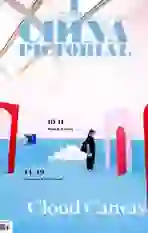UCCA Moving Art Online
2020-08-10byGongHaiying
by Gong Haiying
On May 21, the UCCA Center for Contemporary Art opened its first physical exhibition this year,“Meditations in an Emergency,”after over four months of closure. For the need of epidemic prevention and control, the opening ceremony of the exhibition was attended by only a limited number of people and kept simple and low profile in addition to being livestreamed on several online platforms.
Due to the COVID-19 outbreak, many museums and art institutions began to launch online projects and virtual exhibitions. As a leading contemporary art institution in China, UCCA has presented a series of online projects since February of this year, including concerts, exhibitions, lectures, and movies. The center continues to display works and concepts of Chinese artists and maintain close connections with its patrons during the special period.
Founded by Belgian collector Guy Ullens and his wife in 2007, UCCA has become iconic for contemporary Chinese art. Philip Tinari from the United States has had the longest tenure as the centers director. Since arriving in China in 2001, he has witnessed the establishment and development of many modern art institutions in the country. During the epidemic, he and the UCCA team endeavored to organize many online projects. They also seized the opportunity to ponder over the future of art institutions like UCCA.
China Pictorial: How has the epidemic changed your life and work and how has it inspired you? How did “Meditations in an Emergency” come about?
Philip Tinari: The epidemic disturbed my life and work schedule. During the Spring Festival holiday, I traveled to Europe, Saudi Arabia, and South Africa. I returned to Beijing on February 11 while China was still struggling with the epidemic. We rescheduled all the years work and postponed all major international exhibitions planned to be held at our center.
We began to design this new exhibition about the epidemic in March. The COVID-19 epidemic has been quite a tragedy for the 21st century as well as a rare experience shared by all human beings. We see it from different perspectives and put together interesting works to present the feelings of contemporary Chinese artists.
Over the next few years or even longer, the biggest change will probably be less exchange in the realm of contemporary art. Maybe the term “New Intentionality” can describe some changes, which means that we will take advantage of resources at our disposal in a more comprehensive and smart way. This exhibition reflects what our young exhibition design team was forced to brainstorm to find interesting ideas. We hope to arrange more great exhibitions in the future and share our enthusiasm with more people. This is the core spirit of UCCA.
China Pictorial: During the epidemic, many art institutions launched online exhibitions. What do you think about online platforms for art institutions? Will virtual exhibitions become mainstream?
Tinari: We launched many online projects to stay connected with our patrons while the center was closed. On February 29, the online concert “Voluntary Garden Online Concert: Sonic Cure” was welcomed by lots of people who hadnt been outdoors in over a month, and they were happy about watching it online together.
Combining online and offline projects has been a struggle for art institutions since the emergence of the internet. And the current situation offers new possibilities to solve the problem. When online life is increasingly enriched, exhibitions finally become part of it. In the long run, we will try other online forms and prepare to open an exhibition center in Shanghai to reach people across the country and around the world.
Physical art galleries create intimacy between the audience and works of art, which not only makes for an experience that is irreplaceable, but also endows art with more value. As for the future of virtual exhibitions, I want to spend more time figuring out what we can do and pondering the situation. We are now preparing, for example, to create VR materials by taking photos of the exhibition. Although the experience of art cannot be duplicated online, knowledge related to art can be available online. We hope to achieve more in this regard.
China Pictorial: How do Chinas art institutions differ from their counterparts in Europe and America? When the epidemic is over, what will the future of art institutions and their roles look like?
Tinari: Governments in Europe are giving art institutions substantial support. Many institutions are mainly funded by local governments. In the United States, museums can facilitate nurturing better citizens.
Similarly, considering the countrys booming economy, the Chinese government is expected to promote the development of art and creativity. Thanks to Chinas focus on economics as well as art creation, the number of art museums is increasing, and the 798 Art District is growing. In the future, excellent art institutions will find their own paths to survival, but they must keep an eye on their academic status and influence. Exploration of online projects could produce more energy for the development of art institutions.
